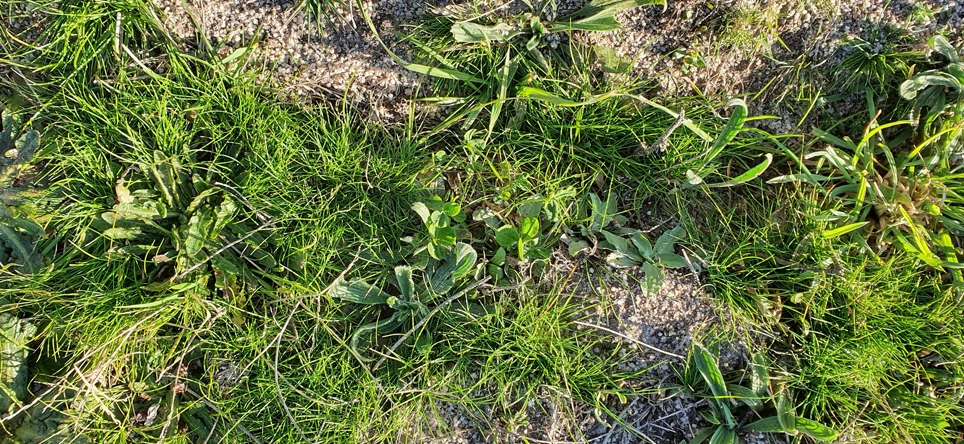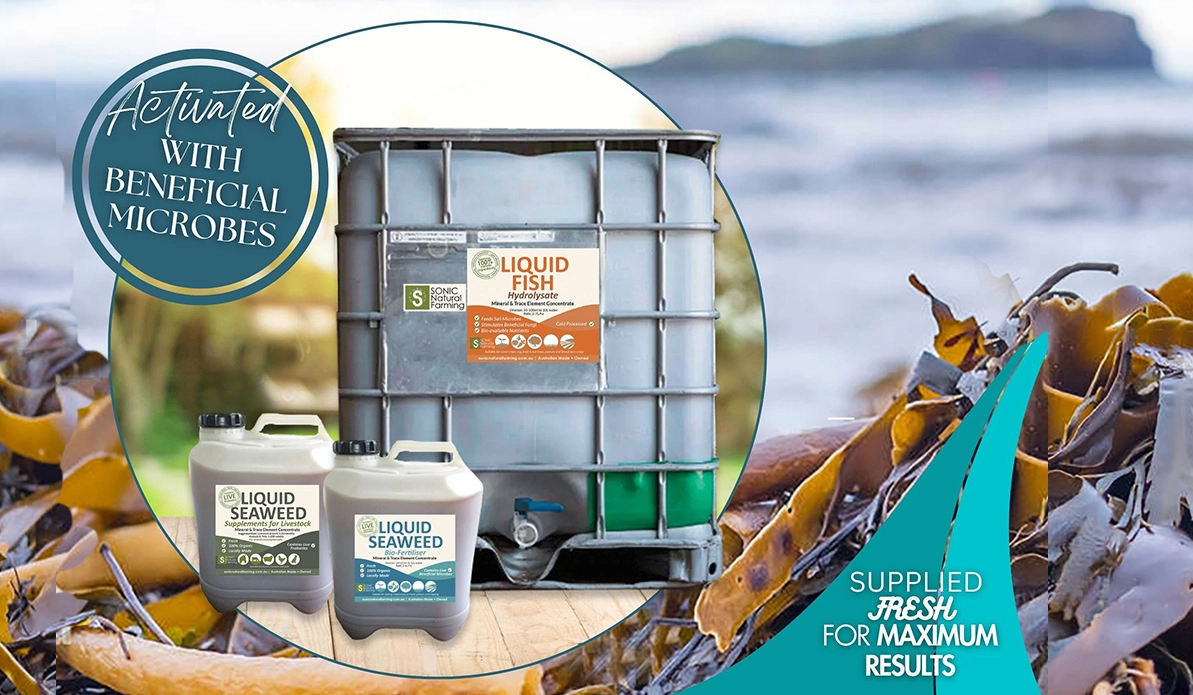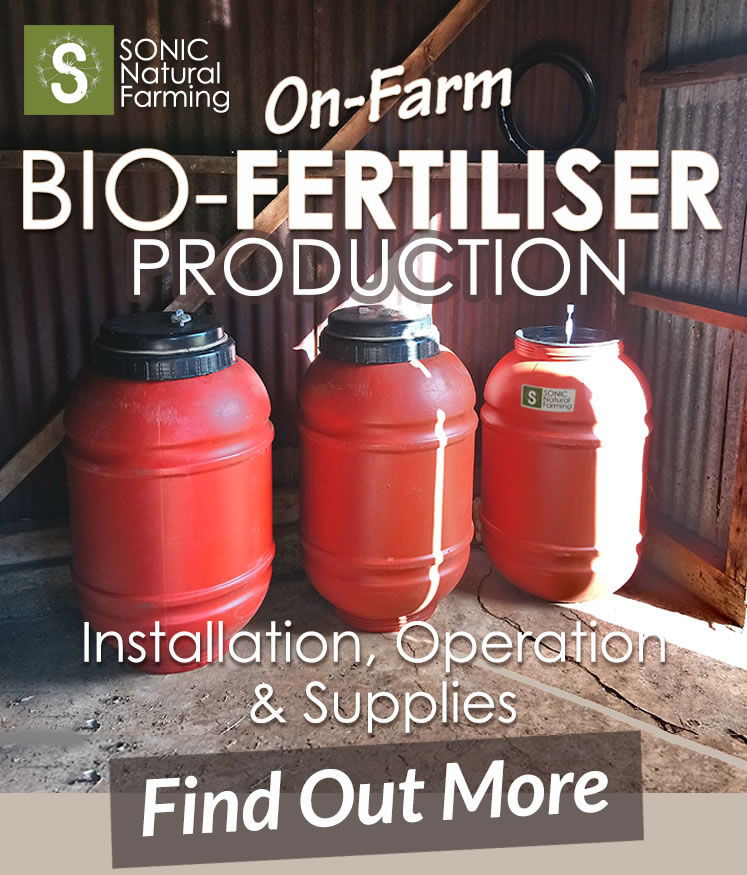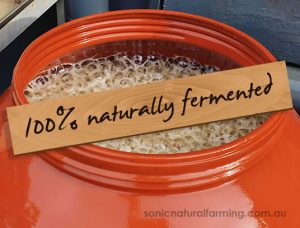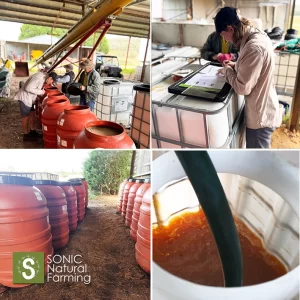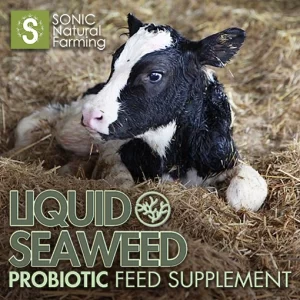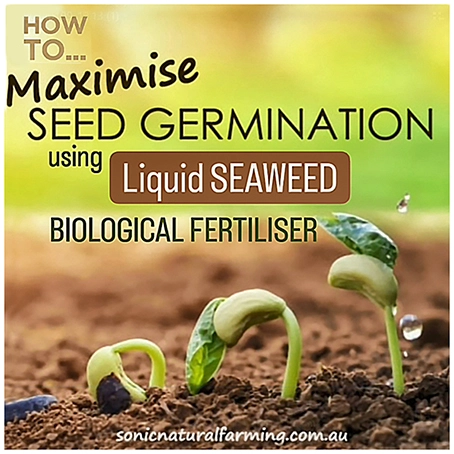When it comes to cover crops and pasture cropping, the general rule of thought is, if you have healthy soil, you you have healthy plants. This is true, however the opposite is also true. If you have healthy plants, you have healthy soil.
How do healthy plants create healthy soil? When you have healthy plants, they start transferring a lot of sugars into the root system. With all of the additional sugar production to the root system, you get a tremendous increase in bacterial populations. These microorganisms then extract minerals from the mineral matrix, and make them available to the plants.
The number one fastest way to rebuild soil health is to maintain ground cover by growing a diversity of healthy plants.
According to many regenerative leaders, such as John Kempf from Advancing Eco Agriculture, “After observing integrated soil plant systems for over a decade, there are two areas where farmers can put in a small amount of product, small applications, and produce tremendous crop responses”, he says.
Tip 1. Biological Seed Treatment
The first area is the application of Biological Fertiliser, and microbial stimulants, on seeds when seeding. Many times over, studies have observed growers putting on applications of beneficial bacteria, as a seed treatment when pasture cropping, and have produced an exceptional crop response.
Biological seed treatment, used for winter cover and pasture cropping, has proved particularly beneficial. The reason why winter applications can be so effective is that it is the time of year when all the underground ‘activities’ occur, eg. plant root and microorganism activity. And, pasture cropping at this time enables the beneficial bacteria to populate, and flush the ground with a large portion of available nutrients. These nutrients are then ready and available when the ‘activity’ starts above the ground.
“I think applying biologicals to seeds is perhaps the single biggest ROI application of any application, that we see, that is the most consistent” – John Kempf.

Pasture cropping with Ausplow machine, which is ripping the ground, dropping the seeds, and injecting Liquid Biological stimulants of SONIC Fish Hydrolysate and Liquid Seaweed Biological Fertiliser, at the same time. (Above image).
How Does Biological Seed Treatment Work?
Seed treatment with biostimulants such as Liquid Seaweed Biological Fertiliser involves coating, or spraying, seeds prior to planting. Beneficial microorganisms, contained in these products include bacteria, fungi, or other organisms that promote plant growth and improve nutrient uptake.
Advantages of Biological Seed Treatment
The use of biological fertilisers, as seed treatments for cover crops and pasture cropping, has several advantages. Firstly, they help establish a favorable environment for seed germination and early root development. Coating beneficial microorganisms on the seed surface, or rhizosphere, enhances nutrient availability and protects seeds against harmful pathogens.
Secondly, liquid biological fertilisers contribute to the overall health of plants by supporting their natural defense mechanisms. As the inoculated seeds enter the soil, they help stimulate the production of phytohormones that regulate growth processes and enhance stress tolerance. This can lead to improved crop yield and quality.
In addition to their direct benefits for plants, biological fertilisers used in pasture cropping also play a crucial role in promoting soil biology. They foster microbial activity in the soil, which is essential for nutrient cycling and organic matter decomposition, which ultimately enhances soil health and plant resilience.
Further Reading – Biological Seed Treatment: Benefits and Methods
Benefits of Cover Crops and Pasture Cropping
- Diversity of plant types and roots help build soil structure
- More plant roots producing sugars to feed microorganisms
- Growing microbe populations in the soil convert more nutrients to plants
- Plant cover helps to outcompete and supress unwanted plants
- Cover Crops help build diversity in the eco-system, strengthening plant immunity against pests and disease
- Cover crops help to maintain soil moisture levels
Tip 2. Liquid Foliar Applications
The second area where favourable crop responses occur in pasture cropping is with biological foliar applications, that are applied in the right quantity, and at the right times.
What Makes Foliar Applications Cost Effective?
With a foliar application strategy, it is possible to really utilise photosynthesis, and bring a lot of new energy into the soil plant system.
Unlike traditional chemical fertilisers, that solely focus on providing synthetic minerals, biological stimulants work by delivering liquid organic minerals to the soil and through the leaf, in order to promote better photosynthesis and a healthy soil plant ecosystem.
In contrast to synthetic minerals that require increasing application rates due to diminishing returns, biological fertilisers contain beneficial microorganisms such as bacteria, fungi, and other soil-dwelling organisms that interact with plants in mutually beneficial ways. By fostering a healthy ecosystem, these organic solutions create long-lasting benefits for both plants and the environment.
When applied as a foliar spray, biological fertiliser benefits small mixed crops, orchards, cover crops, and pasture cropping systems, improving nutrient uptake to provide genuine nutrient density, and increasing resistance to pests and diseases.
How to Know your Foliars are Working
A few ways to test whether your foliar applications are delivering what you need to the plant, is to do a brix reading. A brix test will show a spike, even as soon as 1-24 hrs after a foliar application.
Another method for testing the efficacy of your foliar spray applications is to perform a sap analysis test before the application and then again 48-72 hours after foliar application. Alternatively, you can test the leaf that has not been sprayed with the biological stimulant, and then test the leaf that has been sprayed (48-72 hours after).

Maximising the Effectiveness of Biological Inputs
When it comes to maximising the effectiveness of Biological inputs it helps to keep a focus on supporting the soil microorganisms to establish a healthy soil ecosystem.
The microorganisms present in these fertilisers, when used in conjunction with regenerative pasture cropping practices, improve nutrient availability, break down organic matter, and enhance soil structure. This leads to improved water retention, nutrient cycling, and overall soil and plant health.
What Do Soil Microorganisms Need?
Soil microorganisms have the same basic needs as you do; food, shelter and water.
By providing these needs and promoting a diverse microbial community in the soil, biological fertilisers can help suppress harmful pathogens and pests. This reduces the need for chemical pesticides and promotes nature’s pest control mechanisms.
Furthermore, biofertilisers can enhance plant health by stimulating root development, improving nutrient uptake efficiency, and increasing tolerance to environmental stresses such as drought or disease.
Minimal Inputs with Big Impacts
To make the greatest difference in plant and soil health, using minimal inputs, it is important to choose high-quality biological fertilisers, and implement good agricultural practices. These practices include diverse species and plant families through the pasture and cover cropping, minimising tillage, and holistic grazing management, which can all further help to optimise the benefits of biofertilisers.
Overall, the use of biostimulants such as biological fertiliser, for seed treatment and foliar applications, offers an excellent approach for farmers seeking environmentally friendly alternatives to conventional fertilisers, and is the number one top method regenerative farmers are using today to cost effectively build their soil biology and improve the nutrient density of their pastures.
Informational Video List – Regenerative Agriculture

Want to see how we can help you beat the high cost of fertiliser?

